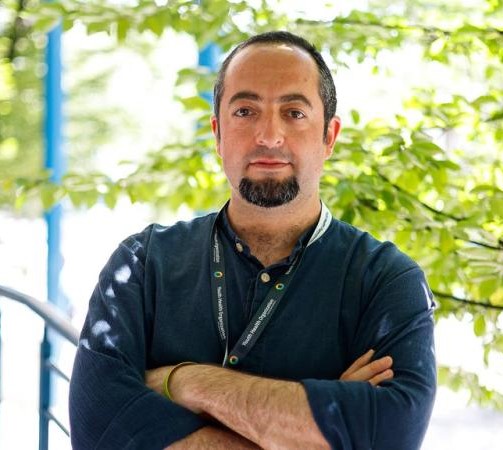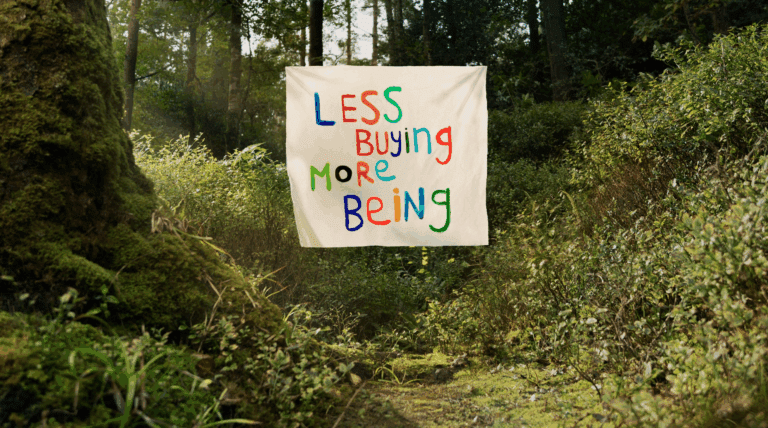Estimated reading time: 5 minutes
The Hot or Cool Institute has just released a new report in its 1.5-Degree Lifestyles series, A Climate for Sufficiency. Beyond its data and analysis, it invites us to reflect on how we live and what kind of future we want to imagine together.
We are living through a period of profound environmental, political, demographic and social transformation that both institutions and citizens struggle to manage. Scientific data remind us of this with a clarity that is difficult to ignore. The latest UN Emissions Gap Report (2024) is explicit: with current policies, the world is heading towards a temperature rise of 2.6–3.1°C, far beyond the 1.5°C limit agreed in Paris.
Europe is warming twice as fast as the global average, and heatwaves, wildfires and floods are becoming part of everyday life. Never before, have we so clearly witnessed the limits of our current approach to sustainability, and of political processes that fail to recognise the systemic nature of the crisis.
In Europe, we have begun to accept the reality of climate change, but not yet what it truly requires: a deep rethinking of how we live and consume. Too often, sustainability is treated as a secondary issue, something to address once “real” economic problems are solved. Yet the climate crisis is inseparable from social inequality, biodiversity loss, and democratic fragility.
Most of our efforts still focus on improving how we produce rather than rethinking what and how much we consume. Ignoring overconsumption and the inequalities that drive it makes it almost impossible to meet the goals of the Paris Agreement. Across the 25 countries analysed in the report, the average lifestyle carbon footprint is 7 tonnes of CO₂ per person, more than seven times the level compatible with the 1.5°C target (1.1 tonnes per person). The richest 10% of the global population are responsible for roughly half of all emissions, while the poorest half produce less than a third.
The gap is widening. Those with greater wealth are already buying into the “green” future of renewable energy systems, electric vehicles, and ESG funds, while low-income groups are often excluded or bear indirect costs. In Italy, for instance, the average footprint is 8.6 tonnes per person, with transport and food accounting for 65% of emissions. To align with the 1.5°C target, emissions would need to fall by 88% by 2035 – a challenge that many EU countries have in common.
The report’s message is clear: business as usual is no longer an option. Circular economy measures remain necessary, but they are not enough. Over the past fifteen years, Europe’s material circularity rate has risen by just one percentage point, from 10.7% in 2010 to 11.8% in 2023. Efficiency alone will not solve the crisis; what is needed is a change in mindset.
Sufficiency asks a simple yet radical question: How much is enough to live well within the planet’s regenerative limits? It is not about giving up, but about redefining prosperity – shifting our focus from accumulation to quality of life, from consumption to shared wellbeing, and from endless growth to equitable prosperity. In this vision, human relationships and social connection are integral parts of wellbeing.
The scenario outlined in A Climate for Sufficiency shows that a global transition towards sufficiency-oriented lifestyles, combined with low-carbon technologies and practices, could reduce emissions to 1.3 tonnes per person by 2035. This would keep global warming well below 2°C, and potentially within 1.5°C if supported by systemic reforms, further ambitious decarbonization of agricultural production practices and a shift from mobility to equitable accessibility. At the heart of this vision lies the principle of contraction and convergence: global emissions must decline while per-capita emissions between countries converge. Wealthier societies must reduce faster to allow others to improve their living standards sustainably.
Climate and social crises are inseparable. The transition must therefore be both just and sufficient – a collective journey that places people, real needs and participation at its centre. In this spirit, the report concludes with six key recommendations: from renewing commitment to the 1.5°C goal and introducing fair fiscal instruments, to reshaping our collective aspirations and fostering new forms of social innovation.
As we approach COP30 in Brazil (10–21 November), this message takes on crucial political significance. Every fraction of a degree matters. Staying below 1.5°C is not only a scientific benchmark, but also a question of fairness, wellbeing and our capacity to, finally, live within the limits of what the planet can provide.
This blog is a edited version of the original editorial written by Dr. Galli in Greenreport.it.







